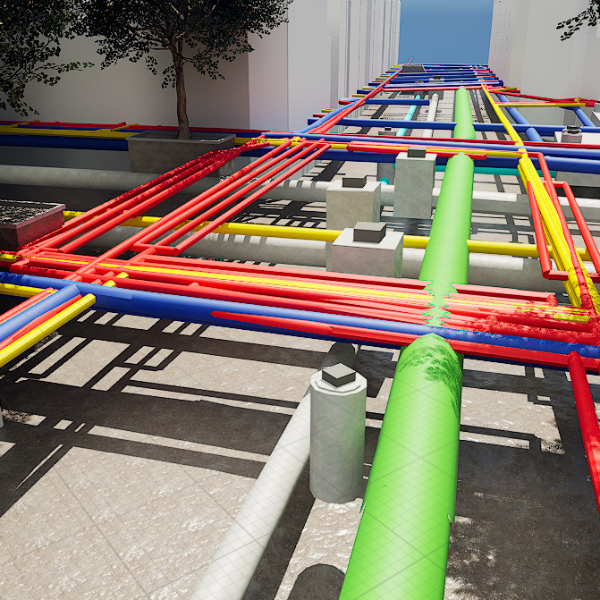Integrated 3D Piping Design

Integrated 3D Piping Design
Due to increasing prosperity and technical innovation, the underground space is becoming ever fuller with sewerage systems, water pipes, and data and electricity cables. As a consequence, the risk of damage during earthworks is increasing and it is becoming increasingly difficult to locate free space. Thanks to our Integrated 3D Pipe Design digital tool, infrastructure-related tasks can now be carried out quickly and accurately and the underground space can be kept under control.
During the preparation/design process – even before the excavation work starts – 3D information is available about where there is space in the soil for new pipes to be installed. This means that clashes with existing cables, pipes and other objects in the subsoil, such as tree roots, underground rubbish containers and charging stations, can be detected earlier and more effectively.
The tool uses data sets for existing cables, pipes, groundwater levels and the locations of existing trees and manages the mutual interfaces. Based on parameters (such as the desired depth, diameter, trench width, etc.), feasible and safe variants can then be worked out. All the parameters comply with the national standards and guidelines.
Up-to-date 3D design
Integrated 3D Pipe Design calculates the minimum required ground cover for the pipes and also calculates the most optimal location and level. Based on this data, an up-to-date underground system can be designed and dimensioned in a short period of time.
The tool also includes the desired implementation technology and related excavation profiles for the underground infrastructure. This results in less nuisance and less excavation work and is therefore cost-effective. The model is easy to adjust during the design process, which means that the design is flexible. The tool then calculates the (specification) quantities for setting up the cost calculation.
Thanks to the early and high-quality clash detection, Integrated 3D Pipe Design helps to achieve cost savings. Due to the greater control over the cost calculation in the design phase, but also because repair and failure costs are reduced.